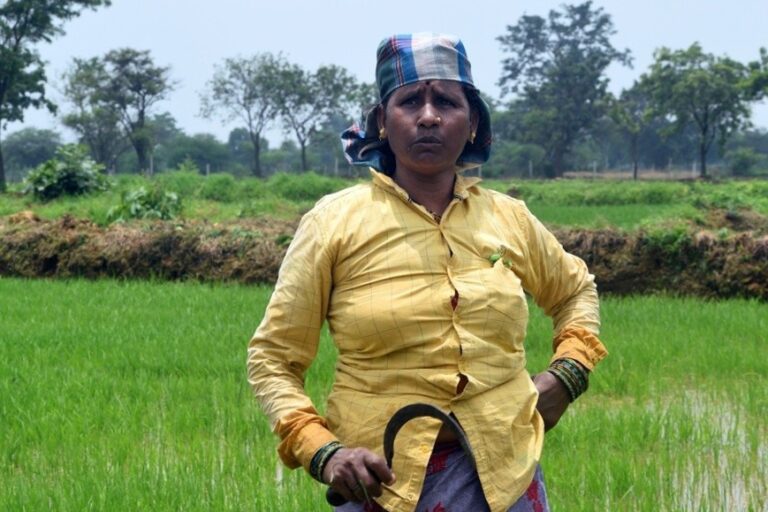- The Global Biofuels Alliance (GBA), established at the G20 Summit in Delhi, aims to promote biofuels.
- Biofuels offer a cleaner alternative to fossil fuels but selecting the right biofuel technologies is crucial to avoid contributing to climate change.
- The GBA should develop guidelines for the entire biofuel production process, from feedstock to blending and retailing, to ensure environmental sustainability, writes the author of this commentary.
- The views in the commentary are that of the author.
The Global Biofuels Alliance (GBA), formally launched at the G20 Summit in Delhi in September, has intensified the discussion on biofuels in the country. The alliance aims to increase the uptake of biofuels across the globe by serving as a repository of information and enabling technology advancement. As many as 19 countries and 12 international organisations have agreed to join the alliance.
Biofuels, by definition, are produced from biomass through chemical processes and can be in solid, liquid or gaseous form. They have the potential to help countries dependent on fossil fuel imports find a cleaner alternative for energy security till commercial scale for other renewable technologies is achieved. Yet, this comes with a risk. Not picking the right technologies and processes for producing biofuels can add to the climate change mitigation challenge instead of resolving it.
For instance, the cultivation of energy crops (to convert them as a source of energy) in place of food crops can result in indirect land use changes, which not only add to food security concerns but also lead to increased carbon emissions. These crops are also more water-intensive, which adds to climate risk instead of mitigating it. This is where the GBA’s role becomes crucial. It must find the right balance and develop guidelines that ensure the global use of biofuels mitigates climate change and helps in global decarbonisation efforts. This would include focusing on the correct feedstock, such as animal waste, and processes for controlling methane emissions and leakages etc.
Why biofuels?
Biofuels, if produced with the right feedstock, can lower the dependence on fossil fuels, especially for countries such as India that rely on fossil fuel imports to meet their energy needs. India imports 85% of its oil and 50% of its natural gas requirements. Replacing some of this with biofuels can help enhance energy security and lower import bills. India has increased its ethanol blending target from 10% to 20% by 2025 instead of 2030. With this move, India is expected to save Rs. 450 billion in oil imports and 63 million tonnes of oil annually. It is, however, imperative to ensure that there is no indirect land use change, compromising food crops in promoting ethanol production.
Many biofuels can be produced from waste and used in place of fossil fuels. For instance, biogas can be generated from press mud, animal waste, crop residue, and municipal waste with 45-75% methane content by volume, which can be used in cooking, heating, and power generation. This can be upgraded using certain techniques to generate over 90% methane content, which becomes equivalent to natural gas in calorific value and can be injected into the gas grid or the city distribution network to be used for natural gas vehicles, industry, or piped gas for cooking.

Biogas can also offer a solution to stubble generation and its subsequent burning, a significant cause of air pollution. Punjab and Haryana produce a total of 25.5 million tonnes of crop stubble on average every year. This can yield 116 million cubic metres (m3) of biogas, as 10 kg of agriculture residue can produce 2.2 standard cubic metre of biogas. Notably, producing one kilowatt-hour (kWh) of electricity requires only 0.75 m3 of biogas, while 0.24 m3 of biogas is sufficient per person per day of cooking. This implies that the stubble generated in Punjab and Haryana has the potential to produce approximately 155 gigawatt-hours of electricity or meet the daily cooking needs of 96.5 million families comprising five individuals each.
Role of GBA
The GBA should work on setting guidelines for upstream (feedstock, land issues), midstream (chemical pathways for conversion) and downstream (blending and retailing) value chains to ensure that there is no added environmental damage from biofuels. There needs to be a complete life cycle assessment of biofuels, beyond reducing end-use emissions.
The International Energy Agency (IEA), in its report released earlier this year to support GBA’s efforts, outlined three priority areas for the alliance – developing high-potential markets for the sustainable production of biofuels, accelerating technology deployment, and establishing performance-based sustainability assessments.
Adhering to these priorities will help increase public and private sector investments and aid the commercialisation of advanced conversion technology. IEA’s 2023 update of the Net Zero Roadmap scenario report notes that modern bioenergy could double by 2050 as it can be a direct substitute for fossil fuels. The report foresees the growth in liquid biofuel production that could cater to the transport sector and other forms of modern bioenergy that could serve the clean cooking, industrial and electricity sectors.
Sustainable feedstock is key
The proposed uptake of biofuels, especially liquid biofuels like ethanol, has raised concerns regarding land use and compromising food production for growing energy crops.
Land is a finite resource that needs to be used efficiently. Institute for Energy Economics and Financial Analysis (IEEFA)’s report on India’s ethanol blending notes that to match the distance driven by an EV recharged using one hectare of solar generation; there would be a need to derive ethanol from 251 hectares of sugarcane or 187 hectares of maize. With increasingly erratic weather patterns, water-intensive crops such as sugarcane and maize that are used for ethanol production would require more irrigation, resulting in higher carbon dioxide emissions. These would then require even major land use changes.

Therefore, there needs to be a clear focus on using sustainable feedstock for producing biofuels and on technological advancements to enable the use of advanced materials as feedstock. The GBA can play a critical role here by setting guidelines, principles and facilitating the availability of skill and capital resources for technological advancements.
According to the IEA, “There are sufficient sustainable feedstocks such as municipal waste, agriculture residue, animal waste, etc. that are available to support the tripling of biofuel production by 2030 within strict sustainability bounds.” The proposed expansion of biofuels and the opening of new markets are also expected to increase the availability of sustainable feedstock.
If land is used for growing energy crops for biofuel production, then there is a high possibility that the proposed methane emission that is expected to be curbed with the use of biofuel will actually increase. Instead, a technical report of the IEA on bioenergy points to the use of waste and agricultural residue, transition to lignocellulosic feedstock such as used cooking oil and increasing agricultural productivity (yield per acre) as ways to lower the impact of land use change emissions.
The availability of waste and feedstock would vary by country. Country assessments would allow for higher uptake without compromising on food crops. There is a need for supporting private participation and investments and, most importantly, for establishing well-functioning markets.
GBA can draw from similar work done by other groupings
GBA must also build on the work done by similar consortiums, such as the Global Bioenergy Partnership (GBEP) and the Clean Energy Ministerial Biofuture Platform. The GBEP was initiated in 2006 by G8 + 5 (China, Brazil, India, Mexico and South Africa). It has 39 partners (23 national governments and 16 organisations) and 48 observers (33 national governments and 15 organisations).
The GBEP, with its Secretariat based in Rome, was established to bring together stakeholders to promote sustainable and efficient use of bioenergy and biomass. The GBA could use GBEP’s set of 24 science-based sustainability indicators for bioenergy to enable informed decision-making. The partnership holds study tours and actively participates in information dissemination on bioenergy and its benefits. The Biofuture Platform is a 23-country grouping, established in 2016 as a small grouping and formally established at the IEA’s Clean Energy Ministerial in 2020. The platform is chaired by the U.S. Department of Energy and coordinated by the IEA to promote innovative and scalable low-carbon bioeconomy (efficient management of natural resources through innovation) by promoting best policies and enabling transformative financing mechanisms.
Overall, the GBA must take a holistic view of biofuels in a manner that serves the purpose of climate change mitigation rather than add to it.
The author is an energy analyst at the Institute for Energy Economics and Financial Analysis (IEEFA))
Banner image: Rice threshing in Punjab. The cultivation of energy crops (to convert them as a source of energy) in place of food crops can result in indirect land use changes, which not only add to food security concerns but also lead to increased carbon emissions. Photo by 2011CIAT/NeilPalmer/Flickr.













